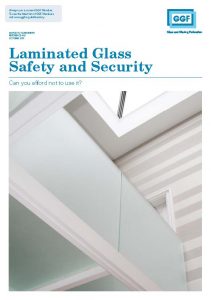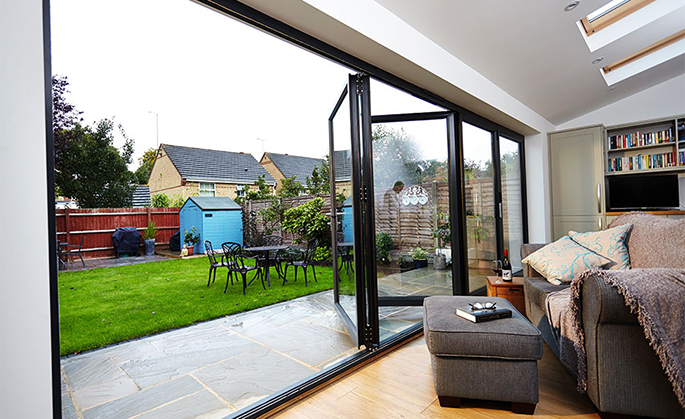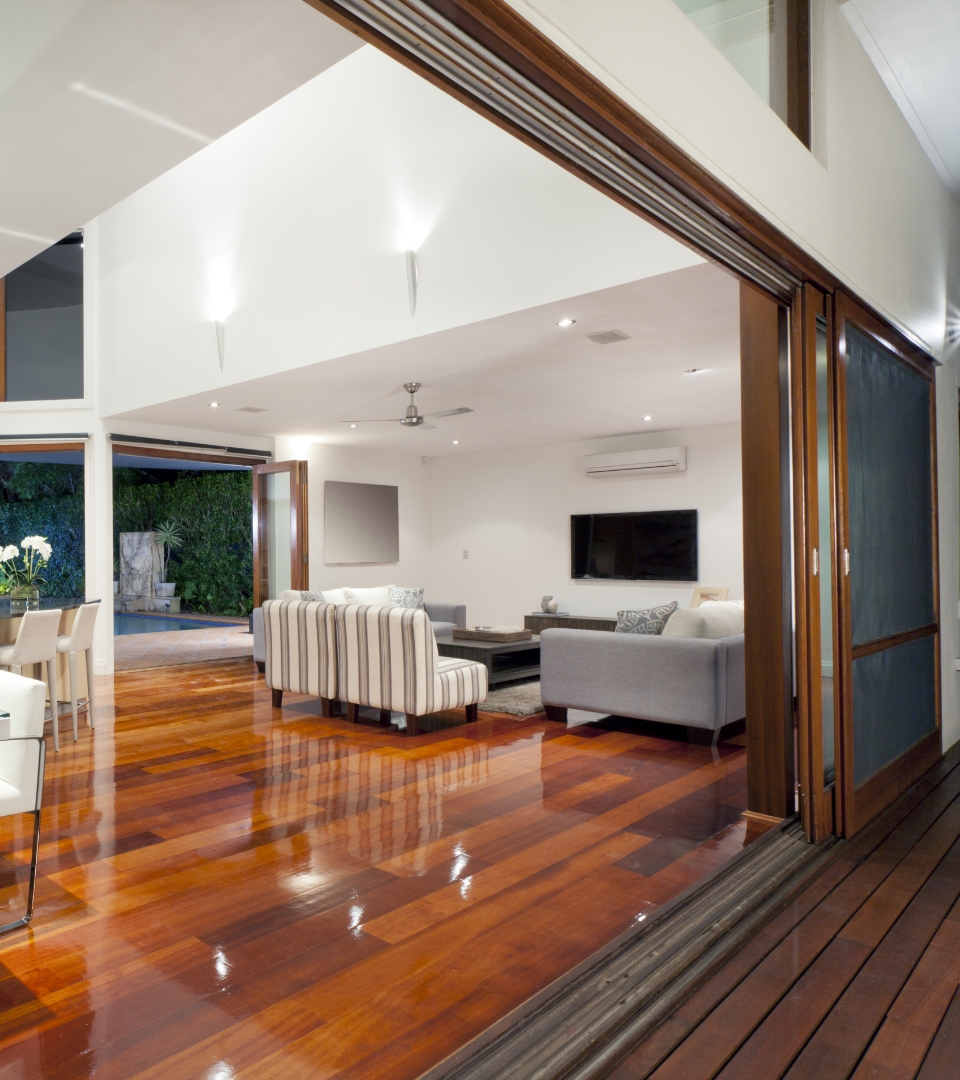
40.1 Laminated Glass – Safety and Security.pdf

Glass and Glazing Federation uses cookies on its website which may involve the processing of personal data.
Necessary cookies are required for our website to function. We also use other cookies for marketing and statistical analysis. In some cases, data may be transferred to third parties. We won’t activate these cookies without your explicit consent, which you can give or revoke at any time.
You can configure these cookies under preferences. Please be aware that if you limit these cookies, you may not be able to use all our website’s functions. You can change this at any time by clicking on our cookie icon, which is always accessible to you.
Here you can choose which cookies you consent to. Simply use the toggles to give or revoke consent to individual cookies, and you can change your preferences at any time.
Read our Cookie PolicyThese cookies are essential for the website to perform as it needs to. They keep the basic functions and important security features working properly for you, anonymously.
Functional cookies allow you to interact with the website and its content, such as sharing information on social media platforms and other third-party features.
We use these cookies to help us understand how users are interacting with the website. They help to provide us with key metrics on how many visitors we have, bounce rate and the sources of website traffic.
Advertisement cookies help to provide relevant ads and marketing campaigns. These track visitors across websites and mean users can receive more customised ads.
These cookies have not been classified into any of the above categories and are being analysed.
Update Cookie Preferences
Promoting the highest industry standards
When homeowners use a GGF Member company to carry out windows, doors or conservatory work, they are investing in professional workmanship and service of the very highest standard. Companies requiring flat glass or glazing products from a GGF Member can also be assured they are dealing with the best companies in the industry. So if you are wanting to improve your home or property, or simply need a glass and glazing product or service, why not browse our directory and contact a GGF Member Company in your area.
|

|
|
|
|
|
A private client in the Lake District commissioned a large, detached new-build property designed to capture panoramic views of the Atlantic Ocean. The architectural plans featured a Juliet balcony to enhance the aesthetics and maximise the stunning sea views. However, the property’s
location in a high wind-load area, coupled with the design requirement for an expansive glass panel, presented considerable structural challenges. To meet safety standards, the glass needed to be triple-laminated, resulting in an exceptionally thick and heavy panel spanning 4.5 metres and weighing 300 kilograms.
Project by GGF Member 360GSS https://www.360gss.co.uk/
|
We design and supply flat, curved, annealed, toughened, laminated and double-glazed glass to companies of all sizes. We’ve earned a reputation that spans the picturesque county of Yorkshire – and beyond; a specialist glass manufacturer serving businesses in and around the region, we’ve been doing what we do for well over a decade
|
As a leading independent glass processor, CT Glass manufacture a wide range of toughened and laminated glasses, including toughened laminated and acoustic laminated glass. We are also suppliers of heat soaked and heat strengthened glass products, therefore covering all aspects of safety and security glazing. In addition, we can supply a variety of fire protection and decorative glasses to meet all your processed glass and glazing requirements.
FOCUSSED ON QUALITY AND SAFETY
CT Glass processed glass products are manufactured to all current UK quality, safety & environmental standards. At all times CT Glass works with its customers to fully understand their requirements, offering in depth technical expertise from order to installation, enabling them to achieve the best overall value in terms of product specification, cost and service. At CT Glass we pride ourselves on a collaborative approach with suppliers and customers alike.
|
Founded 20 years ago by Andy and Trudy Ewen, Okehampton Glass is now one of the town’s best established businesses, employing 14 people from a 6500 square foot factory, joinery workshop and warehouse, out of which the now-familiar fleet of fitter’s vehicles operates six days a week.
As the company has grown, so too has the range and experience offered to its customers: conservatories, windows, doors, fire resistant glazing, glazing components, flat glass, curtain walling, mirrors, toughened glass, curved glass, extrusions, hardware, glass merchanting, insulated and laminated glass, emergency glazing and applied films.
The company prides itself on providing the complete service to those who require it: from creating detailed scale plans through site and building work management, to installation and high-quality finishing, Okehampton Glass can oversee the job from start to finish. Using only full-time fitters working exclusively for Okehampton Glass, our quality control is never compromised by ill-advised cost cutting or the use of contract labour.
We offer a free, no obligation quotation service and are happy to discuss any ideas you may have in home improvement, but we are equally experienced in liasing with architects, designers, builders and other craftsmen, helping the team achieve its objectives on time and to budget.
|
CareyGlass have been pushing the boundaries of what’s possible with glass for over half a Century. The Company operates three factories across Ireland, Northern Ireland and the U.K. delivery the highest level of high performance glass solutions to major projects across Europe and North America. CareyGlass do it all, from high performance architectural glass facades and six meter curved pieces, to advanced IGU’s, laminated, heat treated, digitally printed and ceramic glass, they are experts in their field.
Manufactured in Ireland since 1965 Vista Therm has consistently set the standard as the highest quality and best performing double and triple glazed units on the market. Synonymous with high performance insulated glass, Vista Therm has been performing in thousands of homes across Ireland and the U.K. for over 55 years.
Carey Glass supports customers as a market leader, from project inception right through to project supply, including detailed and mutual project planning. Technical and operational support go hand in hand with on time in full error free product supply to agreed programmes. Collaborating with customers from specification, to logistics, to installation and aftercare, CareyGlass has built hundreds of close, efficient, successful, partnerships.
The Company’s commitment to providing the best processed glass available means that CareyGlass continually invest in the latest machinery, regularly and thoroughly test processes and maintain standards that exceed all industry requirements.
The ethos of the founding members remain at the core of CareyGlass, to help clients do excellent work, to deliver exactly what they need, when they need it and to contribute to projects we can all be proud of.
|
Distributors of FireLite – The Unique Fire Rated Safety Glass – & NeoCeram – High-Efficiency Glass for Wood and Gas Stoves.
|
We are one of the UK’s largest independent toughened and laminated glass manufacturers and glass merchants. We stock a full range of glass from leading British and European manufacturers.
|
Established in 1949, Ecoglass are an independent glass supplier in Norfolk, that has continued to grow and become a market leader in the manufacture and supply of insulating glass units, toughened glass, laminated glass and glass processing.
With over 60 years experience within the glass industry, we have continued to adapt to an ever changing marketplace and exacting customer requirements to ensure our customers receive only the highest quality products.
We manufacture in excess of 8,000 glass sealed units per week, including Pilkington obscure glass, decorative glass panels,
Investing in state of the art machinery has enabled us to supply our customers with the latest in glass technologies, such as, solar controlled glass, self cleaning glass which is perfect for conservatory windows and triple glazing.
This has enabled us to become a Premier Glass Supplier supplying applications such as UPVC conservatories, glass replacement and of course glass for windows, in Norfolk, Suffolk, Cambridgeshire, Essex and Hertfordshire.
Please take a look at our products page to find more information.
Using only the best high quality materials such as Pilkington and Saint Gobain we can ensure that our products are a leading brand within the glass industry.
Our dedicated and highly skilled workforce are committed to producing all of our glass products to an excellent quality for all our clients both large and small.
At Ecoglass our commitment to provide all of our customers with the highest possible glass products will always will be paramount to us. With years of experience we have always adapted our systems, procedures and processes to enable us to always manufacture top quality products.
High Performance Insulated Glass Units
Toughened Glass
Glass Balustrading
Self Cleaning Glass
Leaded Glass Panels
Georgian Bar Designs
Conservatory Glass
Laminated Glass
Triple Glazing
|
Guardian Glass UK Ltd is a market leader in the manufacture & supply of float glass, at Guardian we believe in innovation & have developed high performance coated glass products for all commercial & residential needs. Our Laminated glass range also ensures we have the products to suit your business.
As the recognised authority in the glass and glazing sector, we’re proud to continue to support the GGF community not only here in the UK, but across the Far East and internationally.
Whether it’s keeping up with industry developments, meeting compliance requirements or accessing expert training and technical guidance, our well-established international services are here to help – just as they always have been.
Our global offering provides the same trusted support, guidance and technical expertise GGF Members rely on – now more accessible than ever through our convenient virtual format.

Introducing John Reeves, GGF’s Far East Representative, championing glazing safety and innovation. With 40+ years in the glass industry, from hand-cutting laminated glass to spearheading factory start-ups, John has driven cutting-edge solutions. From pioneering bullet-resistant glass R&D and enhancing safety for global firms.
As the former GGF MENA Chairman, John has guided members on international standards, shaping safer high-rise buildings.
John’s dispute-resolution expertise resolves aesthetic and IGU disputes, helping to keep projects on track. Now based in Bali and covering Asia, he brings additional expertise and knowledge to the GGF in the MENA region.
For any enquiries, you can contact John on j.reeves@ggf.org.uk and he will be happy to discuss your requirements.
|

Energy efficient glazing helps keep heat inside the home and, in combination with other home energy efficiency measures (such as cavity wall insulation, loft insulation and an energy-efficient heating system), can lead to a reduction in annual heating bills.
And that’s just the start. The benefits of having energy efficient glazing installed in your home can also include a reduced carbon footprint, improved home security and noise reduction.
If you’re considering investing in energy-efficient glazing, you’re certainly not alone. There’s a lot to gain from this home improvement, but of course there is also a lot to consider.
This short guide will take you through some key information that will help you make an informed decision.

Energy-efficient glazing is the term used to describe glazing consisting of two or more glass panes within a sealed unit. This includes double and triple glazed windows and similar units found within doors.
Energy-efficient windows and doors consist of a framing material (timber, aluminium, PVC-U or composite) into which one or more glass sealed units are fitted according to the style of the window or door.
Energy-efficient glazing is rated according to its ability to reduce the amount of heat that can pass through the window, the capacity for sunlight to travel through the glass unit, and the capacity for air to move through the unit.
Commonly, the highest-rated glazing according to efficiency is made with Low-Emissivity Glass which has a special coating on the inner surface of one pane, enabling light to travel through whilst reflecting heat back into the room.
The air gap limits the amount of cold air able to get into your home. It does this by acting as an insulator and is completely sealed.
The space between the glass panes is filled with air or gas such as argon, krypton or xenon. These help reduce heat loss through the unit. When gas such as argon – which has low conductivity – is used within this space, the window is then even more efficient at keeping heat inside the property and also at interfering with sound waves from inside or outside the house, reducing noise pollution.
Sealed units also have a strip in between the panes, made from metal or polymer. This strip is called a spacer which can contain a drying agent that deals with any moisture that is trapped in the space between the sheets of glass.
As with the glass itself, the frame material used in energy-efficient windows and doors is also important.
There are several options here:
For ease of purchase, certain window manufacturers label the energy efficiency of their windows with an energy rating ranging from A++ to C, A++ being the most efficient. This rating system has been developed by the British Fenestration Rating Council (BFRC) and it takes into consideration the entire window.
When this energy rating is given, a whole window u-value is also calculated. The u-value refers to how easily heat can pass through the unit. The u-value scale works in the opposite way to an energy rating, in that the higher the u-value, the more easily heat can pass through the window and the window is less efficient.
There are many benefits of EEG, which are increasing all the time as technology and building techniques advance, and our eco-awareness increases.
Key benefits include:
See more: Glazing and noise reduction in homes
See more: How double or triple glazing helps reduce condensation
In newer dwellings with higher-efficiency insulation, a lack of adequate ventilation can increase the risk of condensation forming on internal surfaces – including on windows and other glazed surfaces. A way of reducing this risk is to ensure each room has adequate ventilation, such as trickle ventilators or other forms of ventilation.
Continuous improvements in frames, glass and gas combinations mean the consumer’s energy-efficient window choice is increasing all the time. Energy-efficient glazing is a beneficial addition to any modern
|

Noise is unwanted sound. In the home, this is any sound that distracts or disturbs the occupants.
This could be anything from nearby traffic or low flying aircraft to sounds coming from neighbouring properties such as music and loud conversation.
Sound travels through the air (and solids and liquids) like the ripples seen on the surface of a pond when you throw a stone into it. Just like these ripples, the waves decrease in intensity as they move away from the source.
Sound intensity is measured in decibels (dB). A low dB value indicates a soft sound and a high dB value a loud sound.
The perception of noise will vary from person to person depending upon the source of the noise and the individual’s tolerance/acceptance of a given type of noise.
For example, a person living next to a busy road for a number of years may have become accustomed to it, whereas someone relocating from a quiet location to the same busy road may find the noise a nuisance.
One of the many potential benefits of replacing windows or installing secondary glazing in your home is that in doing so you can often also improve your property’s noise insulation.
The correct installation of good quality, well-made windows or secondary glazing systems can result in a noticeable reduction in noise levels.

The type of glass used within your replacement window could have an effect on the level of noise reduction. Glass is available in a range of thicknesses and typically thicker glasses reduce more noise.
Domestic windows usually use 4mm-6mm thick glass. Some window panes are made up of two or more pieces of glass that have been bonded together; these are known as laminates. Specialist, acoustic laminated glass is available from many glass manufacturers.

Different thicknesses of glass are effective at reducing noise at different frequencies. As a result, a sealed double or triple glazed unit with glass panes of different thicknesses (i.e. both 4mm and 6mm) will be effective at reducing noise across a wider range of frequencies than if both panes of glass were the same thickness.
In addition to reduced thermal losses, triple glazed units can provide a reduction in noise. By increasing the combined thickness of the glass within the unit, the mass is increased. A reduction in noise transmission will result from this additional mass.
The size of the air gap between the panes of glass in either a double or triple glazed window or a secondary glazing system makes a significant difference to the level of noise insulation. Typically a large air gap will improve noise insulation.

Secondary glazing is when another window or glazed screen is positioned within the window reveal of an existing window.
The extra glass pane and air gap now present in the window unit help to improve its noise insulation properties. In some cases, noise reduction can be further improved by lining the window reveal with sound insulation material.
To be effective in reducing noise new windows and secondary glazing systems must be fitted and sealed correctly. Any air gaps around your window will seriously affect its noise reduction properties.
It is also important that any opening window can be securely closed with a good quality seal. If the window does not close correctly noise will be able to infiltrate the property.
Bear in mind that many windows are designed to provide your property with a means of ventilation. Background ventilation through trickle ventilators can, if left in the open position, provide a passage for sound to travel.
Likewise, an open window, perhaps in the night lock position, will not aid sound reduction.
Replacing or upgrading the glazed elements of a home may not singlehandedly solve the problem of excessive noise levels.
This is because noise entering the home via roofs, walls and floors will not be reduced as a result of changes to glazing. Depending upon the source of the noise and type of property, replacing or upgrading the glazing may only be part of the solution.
It is important to discuss your requirements and your expectations with the window installation company.
By explaining the source of noise that you are trying to reduce, the glazing company can advise you on what can be achieved.
The dB reductions possible using the various methods can be supplied by your glazing contractor. Any claim of noise reduction should be backed up by test evidence.
|
With a wide range of conservatory types available, careful thought and planning can help you decide on the one that fits best with your home and suits the needs of everyone who will be using it.
Once you’ve chosen a conservatory style, here are some more things to consider when planning your glazed home extension.
When deciding on the size of your new conservatory, make sure you’ll have enough space to enjoy it. A handy tip is to mark out the planned dimensions in your living room so you can see how much furniture you’ll be able to fit.
How much direct sunlight will your conservatory receive and at what time of the day? This could have a bearing on your choice of building location and also interior design decisions.
The orientation of your conservatory may mean that certain specifications of glazing are more appropriate than others because of the impact of solar heat gain from the sun (see ‘Glazing’ below).
You can choose from a wide range of materials for your conservatory, not only for the frames but also in the glazing, the roof and any masonry.
Think about the mood and texture you want to achieve. Some people like the ‘outdoor’ feel with tiled floors, patio-type furniture and bare brick or stone for the house wall; others prefer an ‘indoor’ character with carpeting, soft furnishings and wall coverings.
Aluminium, with thermal breaks for enhanced heat insulation, is a popular choice and is available in a range of colours and finishes.
PVC-U is the most popular frame material with its long life expectancy and minimal maintenance, especially as nowadays a range of wood grain-effect finishes combine the authentic look of wood with all the toughness of PVC-U.
Wood is the natural choice for people who insist on the real thing.

Double glazing is a must nowadays to keep a conservatory comfortable all year round and by using low emissivity (Low-E) glass, it can cut heat loss even more.
If the conservatory is south or west facing it is advisable to consider the use of a modern solar control glass for the roof and side panels of the conservatory.
Solar control options range from ‘body tinted’ glass (where the colour in the glass absorbs heat from the sun) to ‘metallic coated’ glass products.
Modern metallic coated products have the advantage of being neutral in appearance, not obscuring views, while still reflecting the sun’s heat.
There are two main choices of roofing – glass or polycarbonate.
Glass gives you a clear view through the roof – it can be supplied with solar control and self-cleaning coatings too. Laminated glass and safety filmed glass can add protection you from any falling debris on the roof glazing of your conservatory.
Polycarbonate creates a softer light effect in bright sun (however, it is slightly noisier in heavy rain or hail).
Ventilation is important. You need to be sure that your conservatory will let in fresh air and avoid condensation.
The internal environment can be carefully controlled with the correct specification of both materials and ventilation. Many roofs have built-in trickle ventilation and Building Regulations specify a certain area of opening windows per floor area.
Technological developments mean that you can have opening roof vents installed that can be thermostatically controlled with built-in rain sensors.

Whether it be rain, music, lawn mower, traffic or aircraft noise, reducing the impact of environmental sound can enhance the enjoyment of your conservatory.
The use of laminated glass or enhanced acoustic insulation laminated glass can lessen the amount of noise transferring into or out of your conservatory.
In addition, laminated or acoustic laminated glasses have the extra benefit of reducing standard ultra-violet (UV) light transmission. This means sun bleaching of furniture or fittings is dramatically slowed.
Consider what will be required to clean and maintain the glass throughout your conservatory.
Surface modified glass such as self-cleaning glass is available from many glazing companies and can reduce the need for cleaning the external window panes, particularly in difficult-to-reach roof areas.
Comfort levels and environmental factors should be considered. You may wish to extend your home’s central heating, install a separate heater or go for an underfloor heating system, but remember careful specification, design of materials and the location of the conservatory itself can all lead to natural environmental control.
Similarly, you can have overhead wiring for lights built-in or simply a few wall sockets for a table lamp and other appliances.
|
Bi-folding sliding doors seamlessly bring outdoor and indoor space together. In addition to increasing living space, bi-folding doors can increase natural light and ventilation, while aesthetically improving and increasing the value of your home, plus your lifestyle.

When it comes to planning which bi-folding doors are right for you, it’s important to do your research as they’re available in many different styles, finishes and materials. Important considerations when selecting your bi-folding doors include:
With top-hung style, the overhead operations are easier to conceal and it’s less likely to jam due to grit in the operating mechanism. However, this does require a strong lintel/beam to take the weight of the doors. While with bottom rolling design there’s less weight on the frames, but the sliding motion can be affected if grit gets into the tracks/rollers.
The types of framing materials include:
Triple or double glazed is a must, as the right glass choice/configuration can improve thermal efficiency and also reduce unwanted noise. These also offer safety and security, as both toughened and laminated glass can offer you reassurance and protection.
Plan a master door that will be used most often and think about thresholds. A low threshold provides a seamless look into the outside space with little or no step, whereas a rebated threshold offers increased weather-resistant performance.
Use a GGF member company and get peace of mind that you are getting a quality product and professional installation from a company supported by the main trade authority in the sector.
If you’re planning on installing bi-folding sliding doors, here are some more helpful tips.
Edgetech’s world-renowned Super Spacer® has been integrated into the window units of thousands of striking and ambitious buildings around the globe – including dozens of stunning art galleries and museums.
The Twist is part gallery, part bridge and part sculpture – a 1,000 square-metre landmark that spans the Randsleva River in the Norwegian forest.
Ten quadruple-glazed insulating glass units make up the building’s structural façade, with the free-form units having been manufactured using Super Spacer® TriSeal™. A PVB film blocks the UV radiation to shield the priceless artworks within from sunlight.
Also located in Norway is the Salmon Eye – a giant, four-floor floating art installation, designed to educate visitors about the vital importance of sustainable fishing.
The structure’s ellipsoidal shape is modelled on a salmon’s eye, with the outer layer made of 9,250 stainless steel plates designed to imitate a fish’s shimmering skin.
The installation weighs an incredible 1,256 tonnes, making extensive use of curved and laminated safety glass units created with Super Spacer® TriSeal™ Flex.
Meanwhile, the Musée Atelier Audemars Piguet in the Swiss mountains aims to tell the story of the country’s long tradition of watchmaking. The building takes the form of a glass double helix which is embedded into the landscape and has the appearance of a giant watch spring. It consists of an all-glass curved facade, a 470-tonne green steel roof, and a striking sunshade louvre fashioned from untreated brass.
Regularly exposed to temperatures of well below -20°C, the triple glazed insulating glass, manufactured with Super Spacer® TriSeal™ Flex in black, has been engineered to achieve incredible U Values of just 0.5 W/(m²K).
Edgetech Managing Director Chris Alderson comments: “Whether in the Swiss mountains, Norway’s arctic climate, or the hot deserts of the Arabian Peninsula, Super Spacer® TriSeal™ has repeatedly demonstrated its ability to easily withstand the toughest weather conditions to offer outstanding overall performance.
“For us, it’s immensely gratifying to see our products help make some of the most architecturally ambitious buildings in the world a reality.
“This is especially the case when the structures themselves are just as impressive as the artworks they were designed to contain.
“As architects continue to strive to push the boundaries of what is possible, Edgetech’s products will continue to enable them bring their visions to life”.
For more information, please call 02476 639931 or visit www.edgetechig.co.uk
|
AT THE HEART OF EVERYTHING WE DO
|
Promat UK
Promat UK is a leading supplier of fire-resistant glazing systems and products for a wide range of building sectors.
The company has developed over four decades to become as one of the leaders in the field of fire-resistant glazing as part of an organisation dedicated to manufacturing passive fire protection solutions for numerous construction and industrial applications.
From its production and testing facility near Manchester, Promat serves a wide customer based throughout the UK and Ireland, supported by technical specialists across the business in Europe to provide technically assured solutions for projects ranging from a single door or window to an entire multi-storey building.
Promat’s fire resistant glazing range is designed and tested to meet the latest UK and European standards and can be manufactured to meet additional performance objectives including safety, security, blast resistance, thermal insulation, and acoustics. These multi-functional fire glass solutions ensure passive fire protection can be seamlessly incorporated into the windows, screens, doors, and floors within buildings without compromise.
Promat SYSTEMGLAS®
A range of EI (integrity and insulation) fire resistant glazing systems tested as a complete system, including the glass, framing, seals and all the required components. Offering protection fire up to 120 minutes, the system is available in several framing materials – steel, timber and two versions of a frame manufactured from PROMATECT®-H, a calcium silicate based material, which can be painted, overclad or concealed. These systems are installed by Promat recommended installers to maintain quality through the supply and installation process.
Promat PYROSEC® Door and PRYOSEC® Slimlite Door
Aesthetically appealing door systems which provide steel-framed fire-resistant door solutions with large areas of glass and minimal framing. Both offer EI protection of 30 or 60 minutes.
Promat E-Door
A fire-rated glass door available in a single or double leaf configuration, designed with minimal stainless steel frame members, and up to 30 minutes (E30) and 60 minutes (E60) integrity-only fire protection.
Additional products
Fire rated walk-on structural glass floors, laminated fire rated glass, fire rated glass with intumescent gel, timber fire door-sets, fire rated ceramic glass.
Technical and customer support
Promat UK’s reputation is built upon offering sound and impartial technical advice. We work with customers to develop the most effective fire-resistant glazing specification for their project and supported them throughout the design, manufacture, and installation processes.
|
We offer are a friendly, helpful and knowledgeable service to our clients. From initial contact, through to final installation, we pride ourselves on complete consumer satisfaction. We can assure you of fast production times and competive prices. We welcome the opporunity of prividing quotations and services to any size of customer, or contract. If you require any further information, please do not hesitate to contct our offices.
40 Rushworth Street,
London, SE1 0RB
+44 (0)207 939 9100

